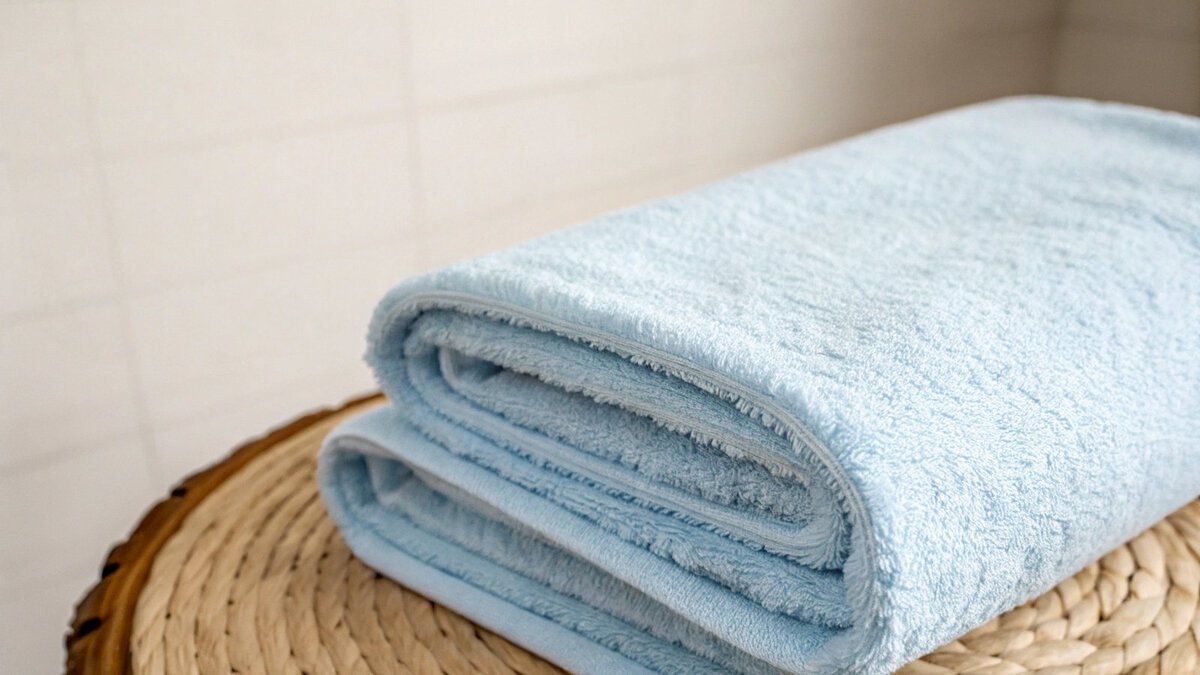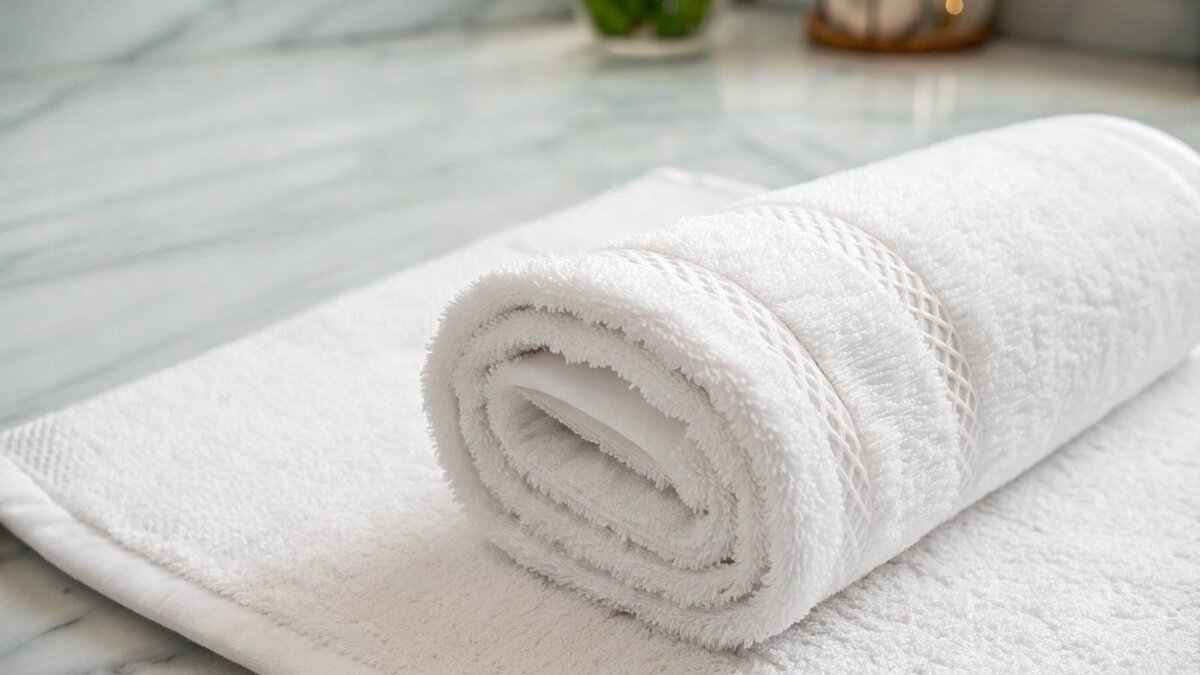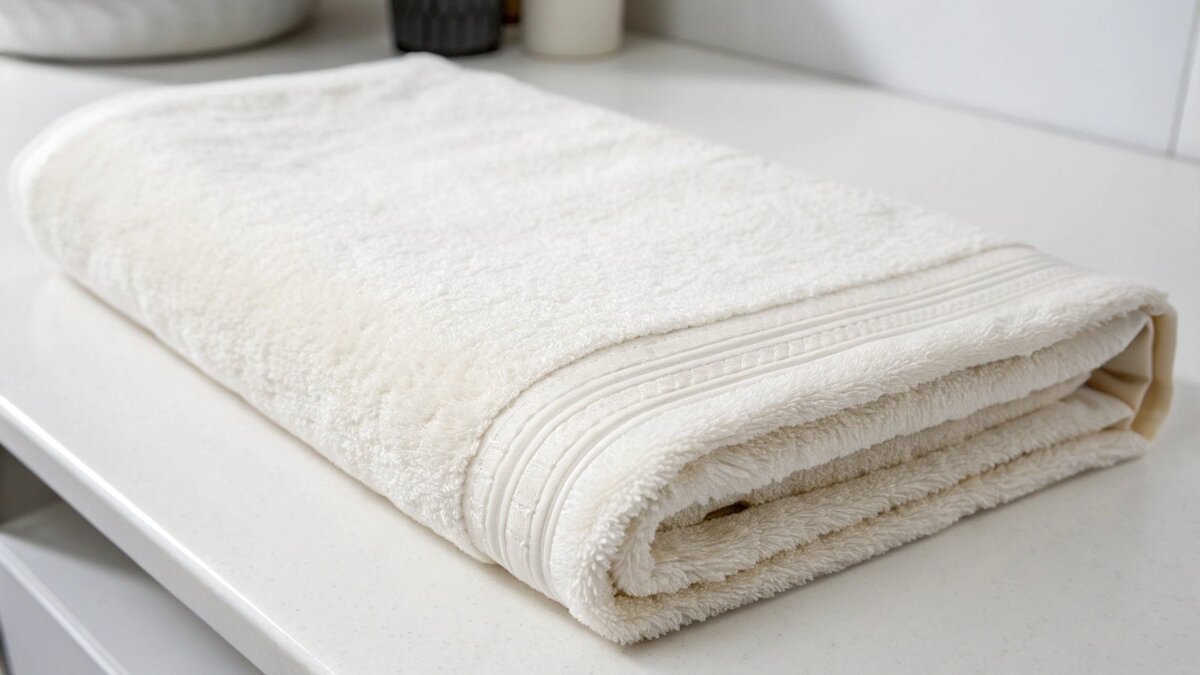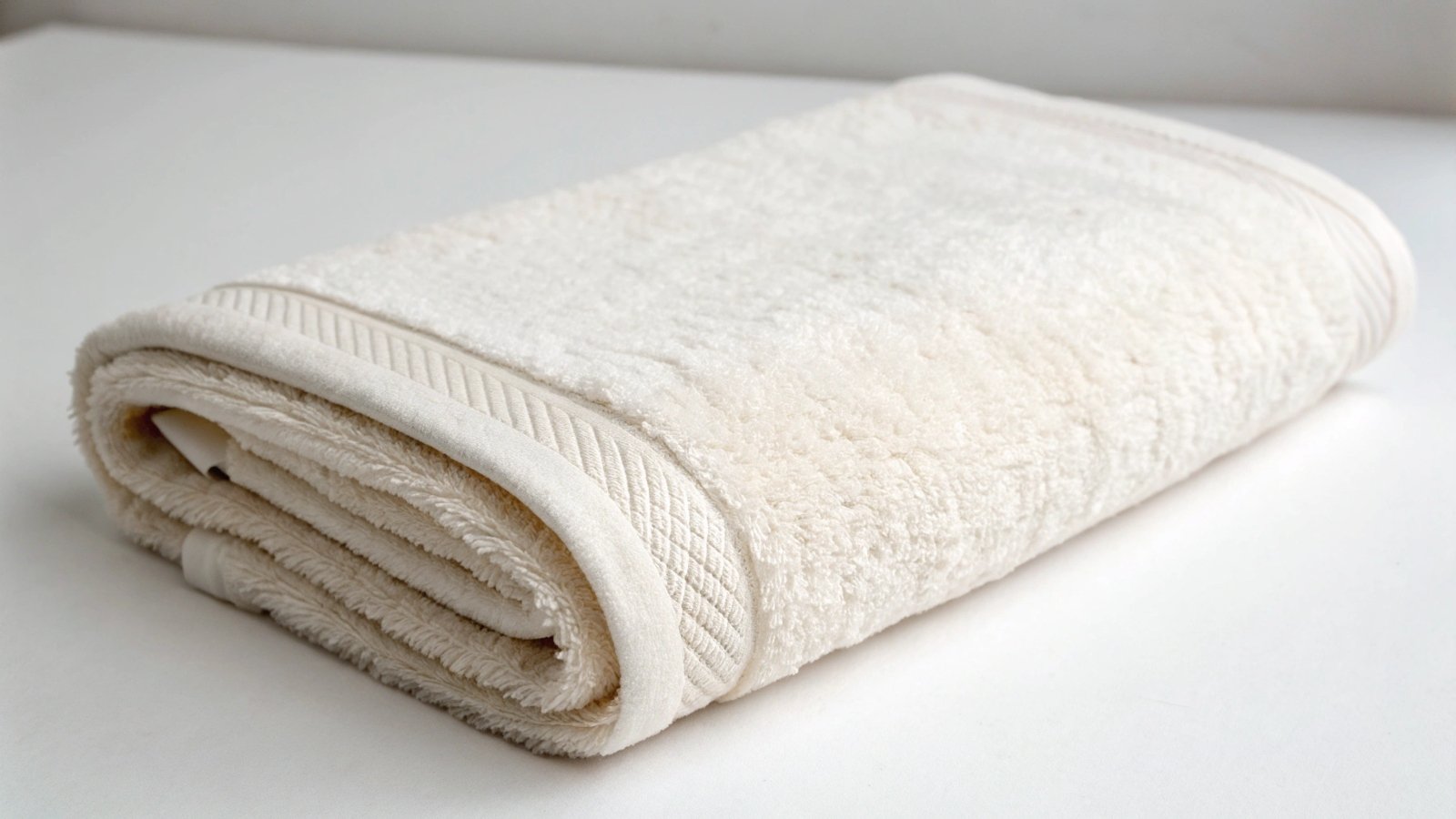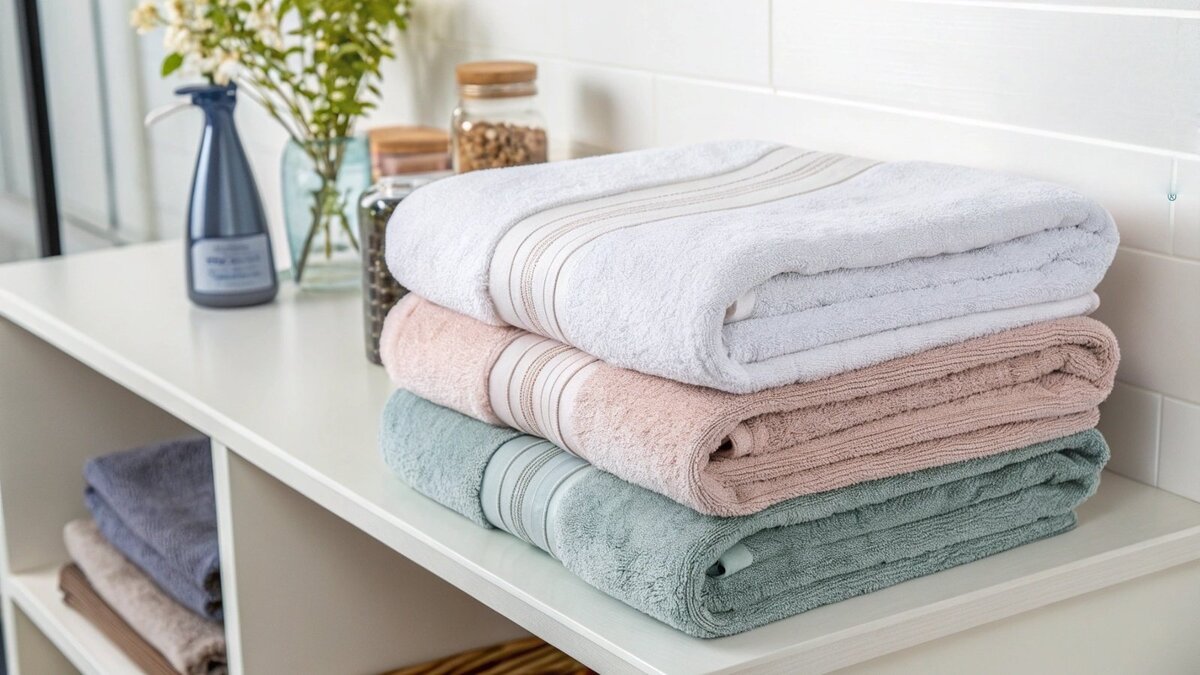Are you tired of cleaning a surface, only to find it covered in tiny fibers? This leaves things looking messier than before. A lint-free towel is the solution you need.
A lint-free towel is made from materials with long, strong fibers that don’t break off easily during use. These towels, often made of microfiber or tightly woven cotton, are designed to clean surfaces without leaving behind annoying fluff, dust, or residue, making them essential for many tasks.
I’ve worked with countless brands who face this exact problem. They source what seems like a good towel, but then their customers complain about lint left on cars, glass, or countertops. It’s a common issue that wastes time and can damage a brand’s reputation for quality. But understanding what separates a truly lint-free towel from a regular one is the first step to fixing the problem for good. Let’s dig into what you need to know to make a confident choice for your business.
What is considered a lint-free towel?
You need a towel for a delicate job, but worry about leaving fibers behind? Cheap towels often shed, creating more problems than they solve. A truly lint-free towel is defined by its material and weave.
A towel is considered lint-free when its construction prevents fiber shedding. This usually means it’s made from synthetic materials like microfiber (polyester/polyamide) or specific natural fibers with very tight weaves, like high-quality, long-staple cotton that’s been properly treated. The key is fiber integrity.
In my years of manufacturing, I’ve seen that the term "lint-free" is all about the details of production. Two main factors determine this: the material used and how it’s woven together. A towel made from short, weak cotton fibers will always produce lint, no matter how well it’s made. The fibers are just too short and break off easily. On the other hand, a towel made from long, continuous synthetic filaments like microfiber is naturally low-lint.
At TowelTrend, when a client asks for a lint-free towel, my first question is always, "What will you use it for?" The answer dictates the perfect specification. For an auto-detailing brand, a plush microfiber is ideal. For a high-end hotel chain needing to polish glassware, a tightly woven cotton towel might be better. It’s about matching the towel’s construction to the job.
Key Features of Low-Lint vs. High-Lint Towels
| Característica | High-Lint Towel (Prone to Shedding) | Low-Lint Towel (Resists Shedding) |
|---|---|---|
| Tipo de fibra | Short-staple cotton, low-grade blends | Microfiber, long-staple cotton (Pima, Egyptian), linen |
| Tejido | Loose, low-density terry loops | Tight, high-density flat weave, waffle weave, or huckaback |
| Yarn Quality | Low-twist, weak yarn | High-twist, strong, and smooth yarn |
| Acabado | Minimal chemical or mechanical finishing | Mercerized or singed to remove surface fuzz |
How do I know if a cloth is lint-free?
You buy a pack of "lint-free" cloths, but they still shed everywhere. It’s frustrating when products don’t live up to their claims. You can easily test a cloth yourself before you commit.
To check if a cloth is lint-free, hold it up to a light source; you shouldn’t see loose fibers sticking out. Another great test is to rub it vigorously on a dark, smooth surface like a black t-shirt or a phone screen. If it leaves fibers behind, it’s not truly lint-free.
As someone who oversees quality control, I rely on simple, effective tests every day. You don’t need a lab to spot a bad towel. The first thing I do with a new sample is the friction test. I take the towel and rub it hard against my dark work pants. It instantly shows if any fibers are breaking loose.
The next critical step is the wash test. This is non-negotiable for any brand testing a new supplier. Wash a single sample towel with a dark load of laundry. When you clean the dryer’s lint trap, what do you see? A high-quality, low-lint towel will leave behind very little fluff. A poorly made towel will clog the filter. I once had a prospective client who was about to order 20,000 towels from another factory. I convinced them to run this simple test first. The sample from the other factory filled the lint trap completely. Our sample left almost nothing. They saw the difference in quality immediately and secured their brand’s reputation before it was too late. Always test a sample wash before placing a bulk order.
What are lint-free cloths used for?
You need a perfect, streak-free shine on glass or delicate electronics. But normal towels leave behind dust and fibers. Lint-free cloths are essential tools for a huge range of professional and home tasks.
Lint-free cloths are used anywhere a clean, residue-free surface is critical. This includes cleaning glass, mirrors, and electronics; detailing cars; dusting furniture; and in sensitive environments like labs, cleanrooms, and medical facilities. They are also popular in hospitality for polishing glassware and silverware.
The applications for lint-free towels are incredibly diverse, which is why we produce so many different types. The core benefit is always the same: a perfect finish with no residue. I’ve helped brands develop specific towels for almost every market imaginable.
In the automotive industry, our clients need plush microfiber towels that can buff away wax or sealant without leaving a single fiber on a car’s paint. For hospitality, the needs are different. Hotels and restaurants require towels that can polish thousands of wine glasses and pieces of silverware to a brilliant shine, a crucial detail for a luxury guest experience. We often recommend a huckaback or flour sack weave for this.
For commercial cleaning companies, speed and efficiency are key. Lint-free towels allow them to clean windows, mirrors, and stainless steel surfaces quickly without needing to go back for a second pass to clean up streaks and lint. And in the home, these same towels are perfect for keeping TV screens, laptops, and eyeglasses spotless. Understanding your customer’s specific use case is the key to providing them with the right product.
What towels have no lint?
You are searching for a towel that absolutely will not shed. The market is full of confusing options. Certain materials are naturally superior for achieving a zero-lint finish.
Towels made from microfiber are the most common and effective type of lint-free towel. Other great options include tightly woven fabrics like flour sack cotton and huckaback weaves. The common factor is a material and construction that locks fibers in place, preventing any shedding.
If a client needs a guaranteed no-lint solution, I almost always start the conversation with microfiber. It’s simply the best material for the job. Microfiber is made of continuous synthetic filaments (polyester and polyamide) that are split into microscopic fibers. Because they are long, unbroken strands, they physically can’t create lint the way natural spun yarns can. Their structure also creates a static charge that actively pulls in and traps dust.
However, microfiber isn’t the only choice. For clients who prefer natural fibers, we have excellent low-lint cotton options. The secret is in the weave. Flour sack towels are made from a very simple, tight, plain-woven cotton. They are thin, durable, and get better with every wash, without pilling. Huckaback towels, another one of our specialties, use a unique weave that is both absorbent and extremely durable with very low linting properties. They are a favorite in high-end European hotels.
Guide to Low-Lint Towel Materials
| Tipo de toalla | Material Composition | Característica principal | Caso de uso principal |
|---|---|---|---|
| Paño de microfibra | Polyester / Polyamide Blend | Continuous synthetic filaments, static charge | All-purpose cleaning, auto detailing, electronics |
| Toalla de arpillera | 100% Algodón | Tight, plain weave, highly absorbent | Polishing glass, kitchen tasks, food prep |
| Huckaback Towel | Cotton or Linen | Durable, textured weave for absorption | Hand drying, high-end hospitality, medical |
| Waffle Weave Towel | Cotton or Microfiber | Waffle-pattern pockets increase surface area | Drying dishes, cleaning glass, spa towels |
Conclusión
A true lint-free towel depends on its material and tight weave. Microfiber is a top choice, but proper testing ensures you get the quality your brand and customers deserve.

